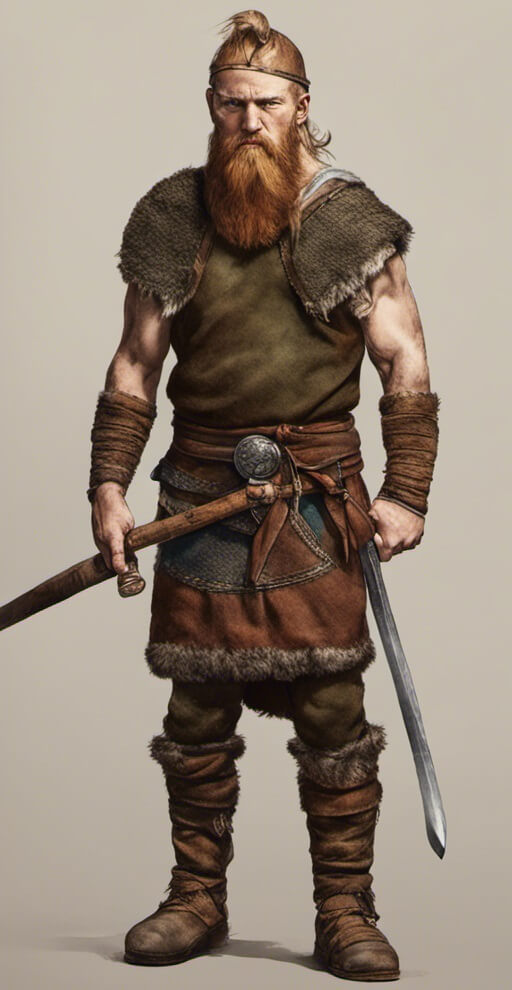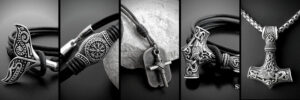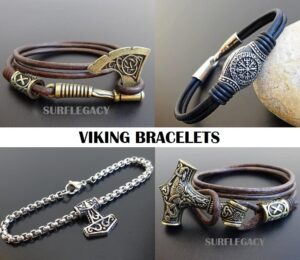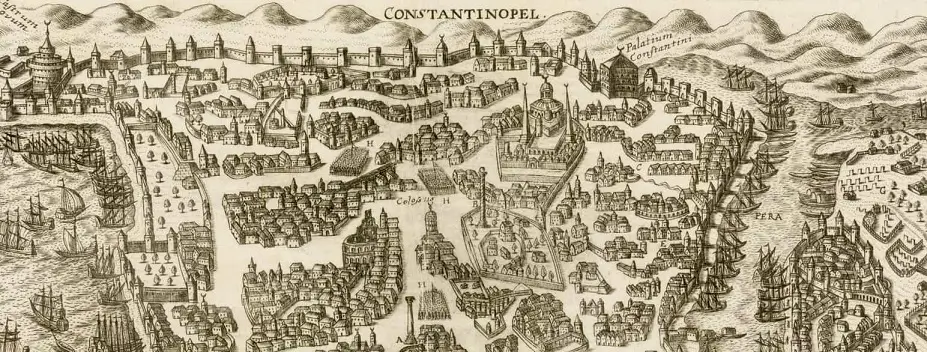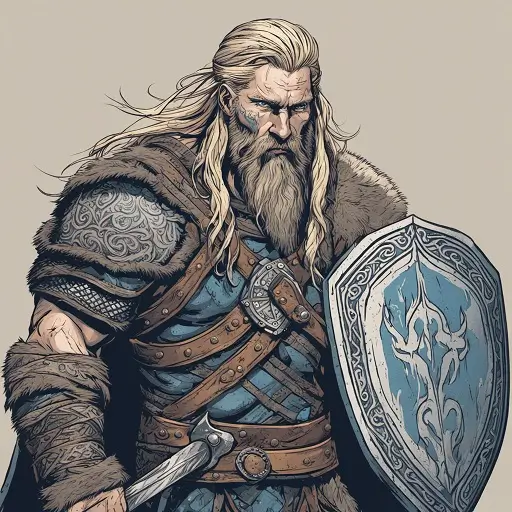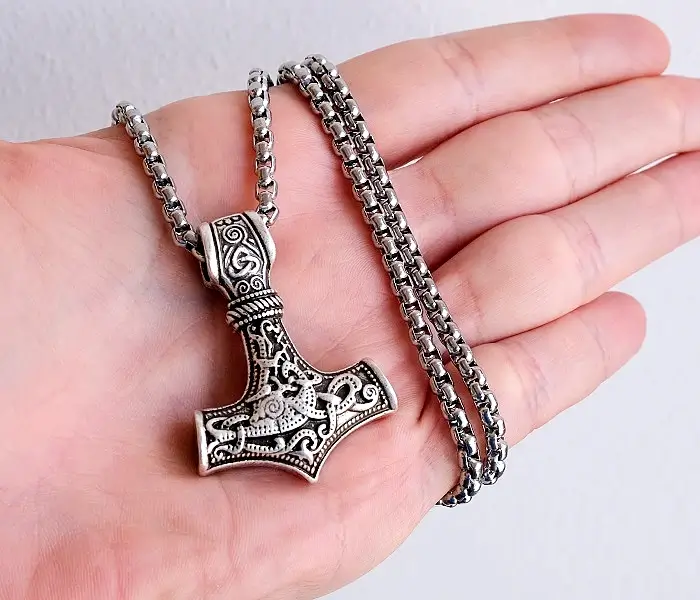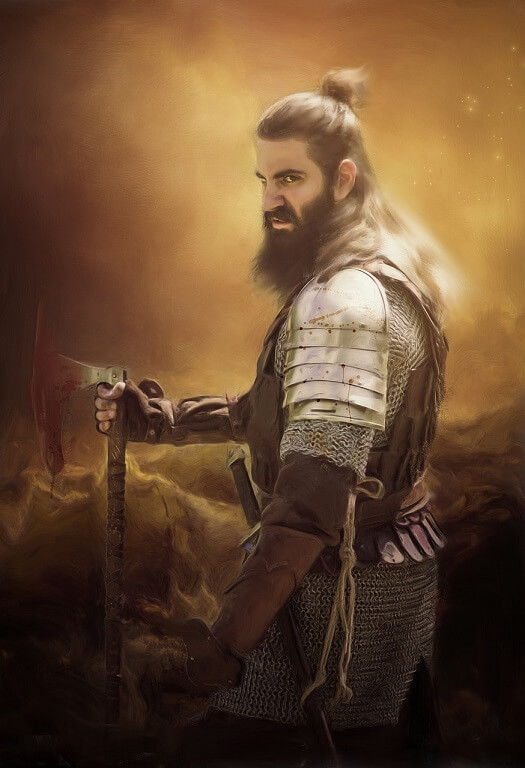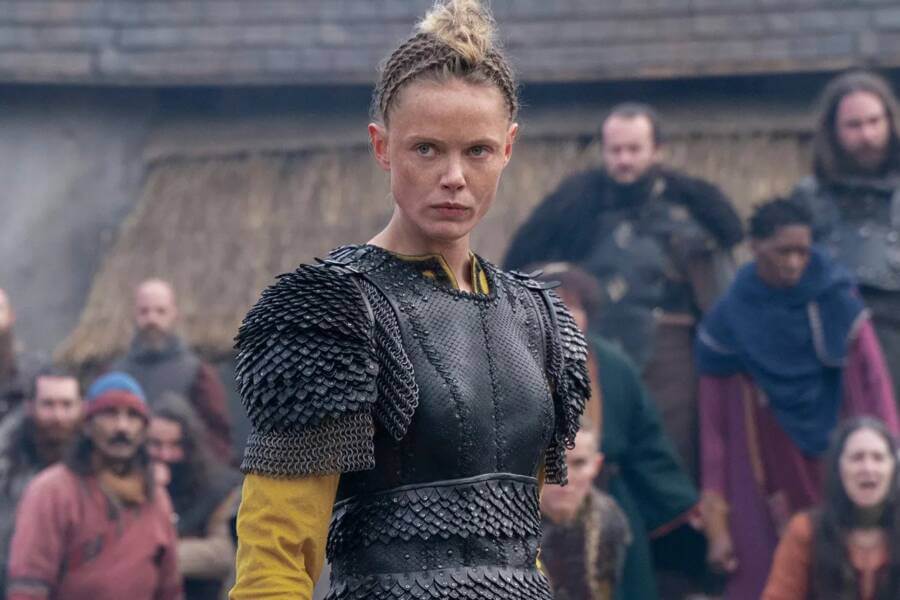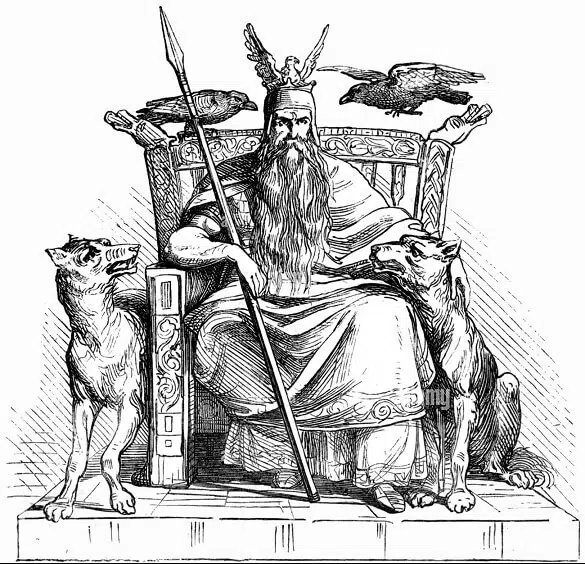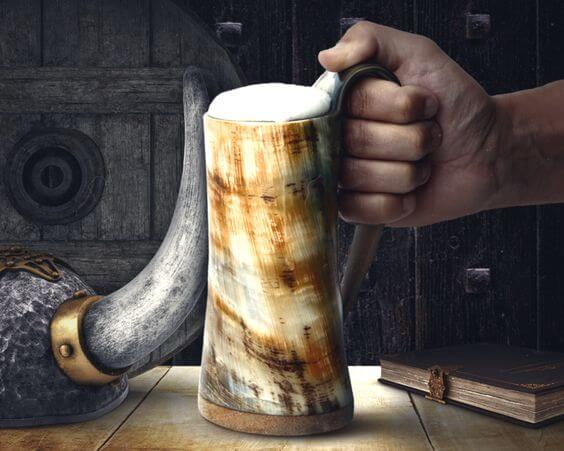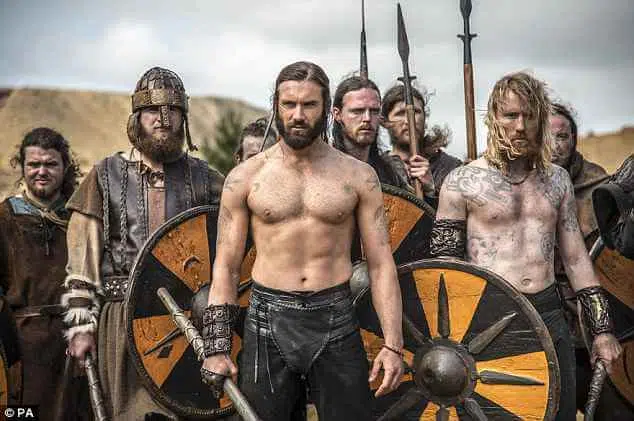Ivar Ragnarsson, also known as Ivar the Boneless, was one of the most notorious and feared Viking leaders in history. As the son of legendary Viking Ragnar Lothbrok, Ivar was born into a powerful Viking family in the 9th century.
Despite suffering from a physical disability from birth, Ivar’s sharp intellect and mastery of strategy propelled him to prominence as a brilliant military commander who played a pivotal role in the Viking conquest of England.
Ivar earned a reputation for his ruthless leadership tactics and brilliant battlefield maneuvers.
He led the historic Great Heathen Army that invaded Anglo-Saxon England, seizing the city of York and helping topple the kingdoms of Northumbria, Mercia and East Anglia.
Ivar’s victories in England marked the beginning of the Viking Age and left a lasting legacy as one of the most strategic leaders in Viking history.
Key Takeaways
- Ivar Ragnarsson was a legendary Viking warlord known for his ruthless intellect and battlefield brilliance, who spearheaded the Norse invasion of England.
- He overcame a physical disability to become a feared commander, employing cunning tactics against enemies.
- Ivar played a pivotal role in weakening Anglo-Saxon kingdoms and paving the way for the Viking Age.
- His ingenious military strategies and authoritative leadership style made him an iconic Viking figure.
- Though details of Ivar’s life mix myth and fact, his impact on European history and Viking lore is undeniable.
- Centuries later, Ivar remains a larger-than-life persona representing the merciless nature yet tactical genius of Vikings.
- His complex characterization and dramatic story have fueled fascination with Ivar as both antihero and villain in pop culture.
The Origins of Ivar Ragnarsson’s “Boneless” Epithet
One of the great mysteries surrounding Ivar Ragnarsson is the origin of his nickname “the Boneless.” The Old Norse term “inn beinlausi” has been subject to various interpretations throughout history.
While some legends state Ivar suffered from a skeletal condition like osteogenesis imperfecta, others propose it referred to impotence or even exceptional battle prowess.
According to the medieval Icelandic saga The Tale of Ragnar Lodbrok, Ivar’s bonelessness was the result of a curse. His mother, the völva Aslaug, warned Ragnar Lothbrok to wait three nights before consummating their marriage after a long separation.
However, Ragnar did not heed her warning, and Ivar was born with a deformity that left his bones weak and fragile.
Other historical sources suggest his nickname could also be translated as “the Hated,” implying his savage reputation among enemies rather than a physical condition.
While the exact meaning is still debated today, Ivar’s handicap ultimately did not prevent him from becoming a formidable Viking warlord.
Ivar Ragnarsson’s Early Life and Rise to Power
Born to Ragnar Lothbrok in the late 9th century, Ivar came from a prominent Swedish Viking lineage, with brothers including Björn Ironside and Halfdan Ragnarsson.
As the youngest son, Ivar likely had to prove himself to his fellow Vikings from an early age. Much of his childhood was shaped by his father’s death and the sworn vengeance against King Aella of Northumbria who killed Ragnar.
As a young man, Ivar joined his brothers on raids into England seeking revenge. Though unable to walk unaided, he developed a reputation as an intelligent, ruthless leader.
Around 865 AD, the Great Heathen Army launched a full-scale invasion of England led by the sons of Ragnar. Ivar stood out as the brilliant strategist directing devastating campaigns against the Anglo-Saxon kingdoms.
By 867, the Vikings captured the city of York and executed Aella. In 870, they attacked East Anglia and killed King Edmund the Martyr when he refused to renounce Christianity.
Through key alliances with his brothers and other Viking warlords, Ivar Ragnarsson became one of the most feared rulers in Britain. His vision and strategic prowess were crucial in the Norse conquest of England.
Ivar Ragnarsson’s Invasion of England
In 865, Ivar Ragnarsson spearheaded the historic invasion of England alongside his brothers that marked the beginning of the Viking Age.
Seeking to avenge their father’s death, the sons of Ragnar led the Great Heathen Army of Scandinavian warriors on a systematic attack to conquer the Anglo-Saxon kingdoms.
Landing first in East Anglia, the Viking army used the kingdom as a starting point to strike into the heart of Anglo-Saxon England.
By 867, Ivar led the assault on Northumbria that captured its capital York and executed King Aella in savage fashion. Later that year, the Danes moved south and captured Nottingham in the Kingdom of Mercia.
Although that invasion was repelled, Ivar spent the next few years gathering strength back in York before returning to East Anglia in 869. There he defeated and killed King Edmund for refusing to renounce Christianity, solidifying his merciless reputation.
In 871, the Great Heathen Army under Ivar and his brothers continued south into the Kingdom of Wessex, battling the forces of King Aethelred.
While Ivar did not live to see the ultimate conquest of all England, his initial invasions broke Anglo-Saxon power and paved the way for establishment of the Danelaw by Vikings. His military achievements made an indelible impact on British history.
Tactics and Leadership Style of Ivar Ragnarsson
Ivar Ragnarsson’s devious intellect and adaptable tactics were essential to the early Viking successes in England. He tailored his strategies specifically to each battle and territory for maximum effectiveness against the Anglo-Saxons.
One of Ivar’s preferred tactics included utilizing psychological warfare to weaken enemy morale. He often spread misinformation and rumors to his advantage before launching surprise attacks on unsuspecting targets.
Ivar also employed more unconventional methods like disguising dead warriors on their ships using pig skins to fake larger fleet sizes.
As a leader, Ivar inspired great loyalty and devotion from his Norse followers. Despite his physical handicap, he projected an image of power and authority.
Ivar ruled through a combination of charisma, rewards for his retainers, and sheer ruthlessness against those who opposed him. His cunning leadership style allowed him to outmaneuver foes and catch them off balance.
Ivar supplemented his military genius by forging critical alliances with his brothers Halfdan and Ubba to increase their forces and coordinate strategy. Together, they presented a united front that the divided Anglo-Saxons struggled to repel. Ivar Ragnarsson’s methods and strategies were key in weakening England for the Norse onslaught.
The Death of Ivar Ragnarsson
The exact details around Ivar Ragnarsson’s death remain uncertain, but various sources provide some clues as to his demise. The Anglo-Saxon Chronicle records Ivar’s death occurring around the year 870.
Similarly, the Fragmentary Annals of Ireland note the death of a King Ímar in 873, likely the same person. Some texts mention he succumbed to a sudden and horrible disease, which may explain his “boneless” epithet.
According to Norse legend, Ivar ordered that he be buried in a place exposed to attack, claiming that any enemies who disturbed his tomb would be met with misfortune.
This held true until King William the Conqueror invaded in 1066. The story goes that William had Ivar’s body cremated on a pyre to lift any curse before his successful Norman conquest.
In recent times, historians have proposed that a Viking burial mound discovered in Repton, England contains the remains of Ivar Ragnarsson himself.
The high status grave dated around 873 AD contained over 250 skeletons surrounding a single body. While not proven definitively, it offers tantalizing evidence of Ivar’s final resting place.
Ivar Ragnarsson’s Enduring Impact on Viking Culture
Ivar Ragnarsson’s legacy extends far beyond his lifetime. The notorious Viking leader and strategist left a lasting impact on Viking culture, shaping the perception of Vikings for generations to come.
One of Ivar Ragnarsson’s most significant contributions to Viking culture was his military tactics. He was known for his strategic brilliance and ruthless methods, making him a feared opponent on the battlefield.
This legacy is still visible in the modern world, with military strategists and historians studying Ivar Ragnarsson’s tactics to this day.
Moreover, Ivar Ragnarsson’s leadership and influence on Viking society were equally significant. He emerged as a powerful leader within the Viking community, commanding authority and respect.
His leadership style and tactics set the standard for other Viking leaders to follow, and his legacy continued long after his death.
Ivar Ragnarsson’s reputation as a fierce warrior also contributed to the mystique surrounding Vikings for centuries. The tales of his exploits on the battlefield and his strategic brilliance made him a legendary figure, inspiring people to learn more about Viking culture and history.
Ivar the Boneless: Fact vs. Myth
One of the most significant myths surrounding Ivar Ragnarsson is that he was born with a physical disability, possibly brittle bone disease. While this legend may have been created to explain his nickname, “Ivar the Boneless,” historians now believe that the moniker was more likely a reference to his agility or prowess in battle.
Another common tale is that Ivar was responsible for the death of the Anglo-Saxon king Edmund, later known as St. Edmund. According to legend, Ivar ordered the execution of Edmund after the king refused to submit to Viking rule.
While it is impossible to verify this story, it is clear that Viking raids did take place in East Anglia during this time period and that Edmund was killed in battle.
There are also claims that Ivar Ragnarsson was a sorcerer or had supernatural powers. While these stories likely have no basis in fact, they have contributed to the mythic status of this Viking leader.
Despite these legends, historians agree that Ivar Ragnarsson was a real person and a significant figure in Viking history. While some details of his life may never be known for certain, his impact on Viking culture and society cannot be denied.
Legacy and Influence of Ivar Ragnarsson
In his lifetime, Ivar Ragnarsson had an enormous impact as the driving force behind the Norse invasion of England. His leadership shaped theCourse of British history and brought the Vikings to prominence as the preeminent power in northern Europe.
The victories won by Ivar and his Great Heathen Army paved the way for greater Norse expansion across the British Isles and beyond.
As a ruler, Ivar redefined what Vikings valued most in a chieftain. His skill as a military strategist and ability to command won him renown, despite his physical disability. Ivar’s cunning and often savage leadership style set the standard for those who sought power in the Viking Age.
The legends that grew around Ivar also influenced how popular culture imagined the quintessential Viking warrior: fearsome, cunning and willing to use extreme violence to achieve conquest. Modern fictional depictions of him in books, movies and television series have burnished his reputation as a larger-than-life figure.
While debated whether historical or mythical at times, Ivar Ragnarsson’s dramatic exploits embody the restless Norse expansion and savagery associated with the Viking Age. As a visionary warlord and scourge of England, his legacy lives on today.
Ivar Ragnarsson in Pop Culture and Fiction: A Closer Look
As one of the most fabled Norse warlords, Ivar Ragnarsson has been depicted extensively in pop culture and historical fiction. His colorful persona and ruthless reputation make him a compelling figure as both protagonist and antagonist.
In movies, Ivar appears as a witty tactician in the 1969 film Alfred the Great. He takes on a more exaggerated villain role in Hammer of the Gods from 2013.
The character also plays a major part in the hit TV series Vikings. Introduced in Season 2, Ivar grows into a key if troubled heir to Ragnar’s legacy, known for his manipulative brilliance.

Ivar Ragnarsson from the TV series Vikings
Several historical fiction novels have also incorporated Ivar as a character, including Bernard Cornwell’s The Last Kingdom series and The Hammer and the Cross by Robert Ferguson.
He generally appears as a supporting antagonist, often employing cruel methods against heroes like Uhtred or King Alfred.
The video game Assassin’s Creed Valhalla features Ivar during the invasion of England as someone whose schemes the player must continually thwart. He is also included as a playable leader in the strategy game Crusader Kings 3.
Through these varied fictionalized accounts, the mythos around Ivar Ragnarsson continues to capture popular imagination.
12 Fascinating Facts about Ivar the Boneless
- Ragnar Lodbrok’s Son: Ivar claimed to be the youngest son of the legendary Viking king, Ragnar Lodbrok, and Aslaug Sigurdsdottir. His brothers included famous names like Björn Ironside, Halfdan Ragnarsson, Hvitserk, Sigurd Snake-in-the-Eye, and Ubba. There’s speculation that he might have been adopted, a common Viking practice to secure dynastic control.
- Historical Existence: While Vikings didn’t maintain written records, various sources including Icelandic sagas and the ‘Deeds of the Danes’ written by Saxo Grammaticus in the 13th century confirm Ivar’s existence and activities as a Viking warlord.
- The Mysterious Nickname: Ivar’s peculiar nickname, ‘Boneless,’ has several theories surrounding its origin. Some legends attribute it to a hereditary skeletal condition, while others suggest it might refer to his physical flexibility or even impotence. The Gesta Danorum doesn’t mention his supposed bonelessness.
- Leader of the Great Heathen Army: Ivar and his brothers, motivated by their father’s capture and death, invaded Britain in 865 with a massive Viking force known as the ‘Great Heathen Army.’ Their aim was to reclaim lands once ruled by Ragnar.
- British Conquests: Ivar’s forces landed in East Anglia and quickly moved north to capture York in 866. His conquests included Northumbria and Mercia. King Alfred and his brother Æthelred I of Wessex finally pushed them back.
- Bloodthirsty Reputation: Ivar earned a reputation as a fierce and cruel warrior. Some accounts even describe him as a berserker, known for fighting in an uncontrollable, trance-like fury.
- Companion of Olaf the White: Ivar joined forces with Olaf the White, the Danish king of Dublin, for various battles in Ireland, Scotland, and Strathclyde. Their alliance brought them success and wealth.
- Ímar and Uí Ímair Dynasty: Many historians believe Ivar and Ímar, who ruled Northumbria and the Irish Sea, might be the same person due to overlapping historical records and events.
- Death and Disease: While Ivar’s records seem to disappear around 870, Ímar’s reappear after capturing Dumbarton Rock. Both Ivar and Ímar are believed to have died in the same year, with theories suggesting that Ivar’s nickname might be linked to his cause of death, a sudden and horrible disease.
- Repton Burial Theory: Some experts argue that the skeleton of a 9ft tall Viking warrior found in Repton, England, might be Ivar the Boneless. This discovery, accompanied by numerous other human remains, hints at the possibility that he was a significant Viking warlord.
- Dubious Reputation vs. Beloved Leader: Ímar was loved by his people, while Ivar was portrayed as a bloodthirsty monster by his enemies. However, these differing depictions don’t necessarily rule out the possibility that they were the same person.
- The Viking Winter in Repton: Ivar’s presence in England during the Viking Age is strongly associated with the Viking winter in Repton. In 873, the Great Heathen Army traveled to Repton for the winter, leaving behind traces of their occupation. This historical event further solidifies Ivar’s connection to the British Isles.
Frequently Asked Questions About Ivar Ragnarsson
Who was Ivar Ragnarsson?
Ivar Ragnarsson was a notorious Viking leader known for his ruthlessness and strategic brilliance.
What was Ivar Ragnarsson’s background and early life?
He was born into the influential Ragnarsson clan around 794 AD. His lineage gave him an advantage in Viking politics. Details about his youth are scarce but he likely received elite training in warfare and leadership.
How did Ivar Ragnarsson gain power?
Through military successes, political marriages, and strategic partnerships with other ambitious Vikings. His cunning tactics allowed him to outmaneuver rivals.
What were some of Ivar Ragnarsson’s personality traits and skills that made him an effective leader?
He was known for his charisma, powers of persuasion, and ability to build loyalty and morale. Ivar was also extremely determined, focused, and disciplined in pursuing his ambitions. His intellectual brilliance and creativity in military strategy were major assets as well.
What was Ivar Ragnarsson’s leadership style? Was he more authoritarian or collaborative with his warriors?
While capable of diplomacy, he was generally an authoritarian commander who expected total obedience. However, he allowed trusted advisors to have input and built camaraderie with his inner circle.
How did Ivar Ragnarsson’s physical disability affect his rise to power and leadership?
Despite his limitations, he never allowed his disability to hold him back from the battlefield or politics. If anything, it may have fueled his determination and added to his mystique.
Why do some historians debate the existence of Ivar Ragnarsson as an individual?
The limited contemporary sources make it difficult to distinguish between factual accounts of his life versus mythic exaggerations that developed over time. Some believe he may be a composite hero.
What made Ivar Ragnarsson stand out compared to other Viking leaders of the time?
His cunning political instincts, pioneering military tactics, and larger-than-life personality distinguished him from peers. Ivar embraced risk and theatricality, adding to his fame.
What were some of Ivar Ragnarsson’s major conquests and raids?
He led raids into England, France, and other European areas to loot wealthy settlements like monasteries. Major victories include the attack on East Anglia.
What made Ivar Ragnarsson such an effective leader?
His strategic brilliance and willingness to use ruthless methods against enemies set him apart. He inspired loyalty in followers and was charismatic.
Why did Ivar Ragnarsson ultimately lose power?
Mounting external threats and dissent from within his ranks combined with Ivar’s declining health led to pivotal military losses. He failed to contain instability.
How much of Ivar Ragnarsson’s story is verified vs myth?
While his existence is confirmed, many details of his life are blurred by legends. Claims of supernatural powers or bone disease are likely fiction.
What was Ivar Ragnarsson’s lasting impact on Viking culture?
His legacy as a cunning strategist and dynamic commander shaped ideals of leadership. His larger-than-life persona became etched in Norse lore.
Why has Ivar Ragnarsson remained a pop culture phenomenon?
His character archetype as a complex, ruthless yet visionary antihero has cross-generational appeal. His story embodies Viking ideals of boldness.
Conclusion
As one of the foremost Viking warlords of his era, Ivar Ragnarsson succeeded in carving out a legendary yet blood-soaked niche in medieval history. Born with questionable physical debilities, he overcame perceived weaknesses through raw cunning and brilliance as a military commander. His visionary leadership guided the historic Norse invasions of England that ushered in the Viking Age.
While a secondary figure compared to his famed father Ragnar, Ivar’s success secured his own reputation as a merciless warrior and battle strategist. His Spiteful tactics and penchant for psychological warfare struck fear into the hearts of enemies and allies alike. Ivar played the role of both Viking hero and savage villain, admired yet feared in his time.
Centuries after his death, Ivar the Boneless remains one of the signature Vikings. Though details of his life mix myth and reality, his ruthless determination and impact on European history live on as testament to the turbulence and grandeur of the Viking era. Hated yet respected, handicapped but cunning, Ivar Ragnarsson stands out for his vivid legacy of conquest and cruelty.
Shop Viking Jewelry
Are passionate about Vikings or Norse Mythology?
Finding the ideal piece of Viking Jewelry can be challenging and time-consuming, especially if you lack inspiration or don’t know where to look.
Surflegacy, has you covered. We have a wide range of Handmade Jewelry in various styles, shapes, colors, and materials, to accentuate your Viking spirit and look. Do not hesitate to visit our selection HERE
Whatever you wear, you’ll find the ideal trendy piece to complement your wardrobe. Our jewelry is designed to be worn every day, no matter where you go or what season is. Are you ready to step up your wardrobe game?

